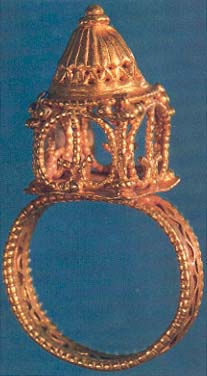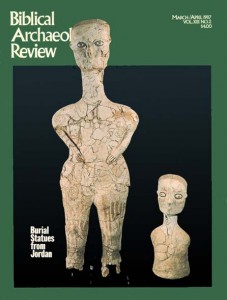Jesus’ Tomb Depicted on a Byzantine Gold Ring from Jerusalem

In the May/June 1986 BAR, Yaakov Meshorer published for the first time an exquisite gold ring excavated just south of the Temple Mount in Jerusalem (“Ancient Gold Ring Depicts the Holy Sepulchre,” BAR 12:03).
According to Meshorer, the bezel of the ring (the part that projects from the finger) is in the form of a structure he identifies as the Holy Sepulchre, the tomb of Jesus.
Largely on stylistic grounds, Meshorer dates the ring to the Crusader period or thereafter, anywhere from the 12th century to the 16th century, when such rings, featuring the Holy Sepulchre as rebuilt in the Crusader period, were being sold in Jerusalem as souvenirs. He recognizes that the ring was found in a Byzantine house and on this basis was originally dated to the sixth century A.D., but that date, he says, “now seems clearly wrong.” Apparently he regards the ring as an intrusion into the Byzantine level of excavation.
I agree that the ring was intended to depict the tomb of Jesus, but I believe it can be shown that the ring indeed dates to the Byzantine period, a time of glory for Christian art.
Already a library member? Log in here.
Institution user? Log in with your IP address.

